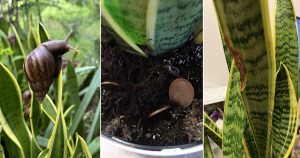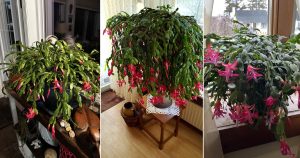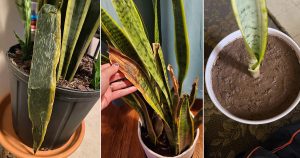Planning to gift a Christmas Cactus to your loved ones? Here are some surprising facts you probably didn’t know about this plant.
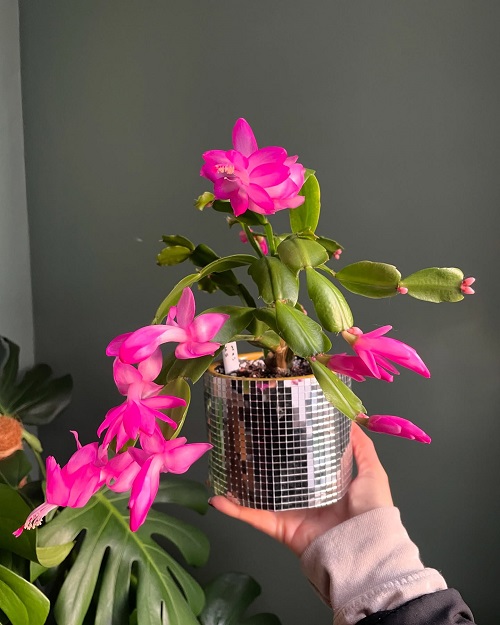
Straight from the mountainous tropical rainforests of southeastern Brazil, Schlumbergera varieties are always in demand and loved across the globe! Of course, you might already know it’s quite similar to the Thanksgiving and Easter cactus. But here are some surprising Christmas Cactus facts that might just surprise you!
Surprising Christmas Cactus Facts You Never Knew
1. They Don’t Need Soil

In the wild, Christmas cacti naturally grow without even needing soil! Yes, you read that right. Basically, they are epiphytes, which means they are adapted to grow on other bigger trees and absorb moisture and nutrients directly from their environment. Plus, their segmented stems can also store moisture.
This quality actually helps them thrive in the habitat that they do. And no, they do not harm their host plants at all!
2. They Can Grow on Rocks
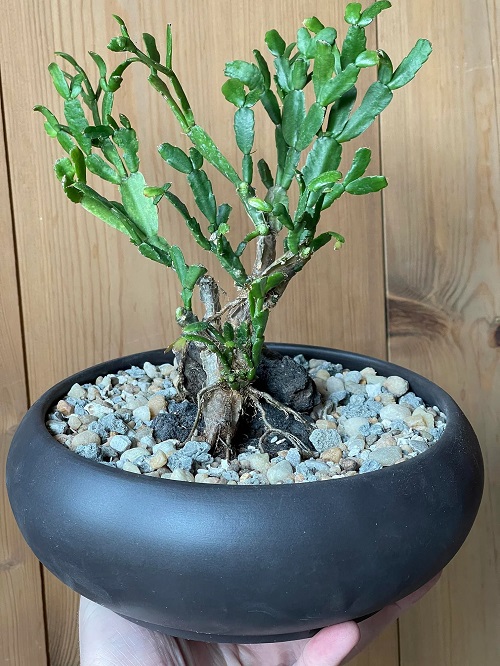
Another cool trick up their sleeve—they can even grow on rocks! These cacti are lithophytes, meaning they can survive in rocky crevices with little to no soil.
Their roots cling to small bits of organic matter and absorb nutrients from rainwater and humid air. Now that’s tough and resourceful!
3. Has French Roots
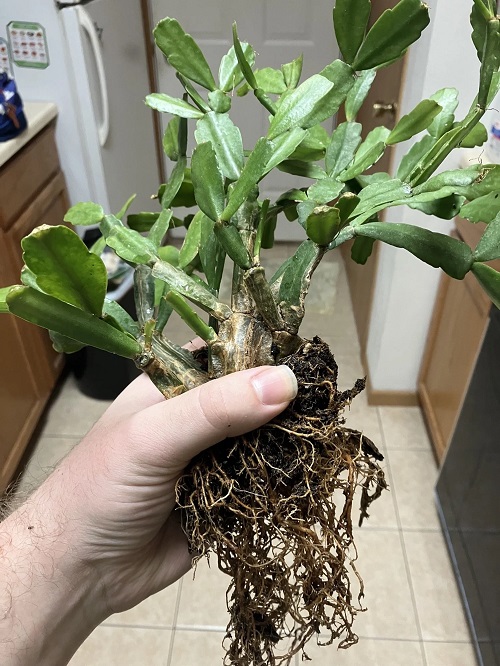
Now this is one fact that we are pretty sure no one knows! The Christmas Cactus belongs to the Schlumbergera genus, named after Frédéric Schlumberger, a 19th-century French horticulturist. He was famous for his cactus collection near Rouen, France.
In 1858, the genus was named in his honor—a tip of the hat to his love for cacti.
4. Zygomorphic Flowers
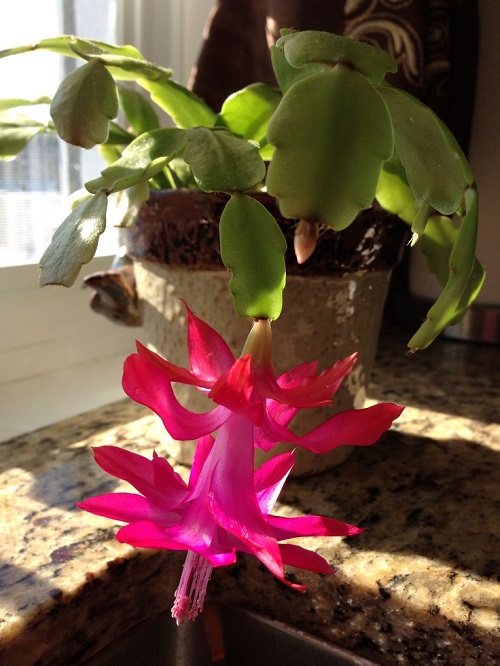
If you’ve grown a Christmas Cactus before, you know how beautiful the flowers are. But here’s something deeper! These flowers are perfectly symmetrical—if you slice one down the middle, both halves mirror each other.
Additionally, these zygomorphic flowers have an S-like shape on the sides. They’re also packed with nectar and attract hummingbirds!
5. Similar Growth Habits to Orchids
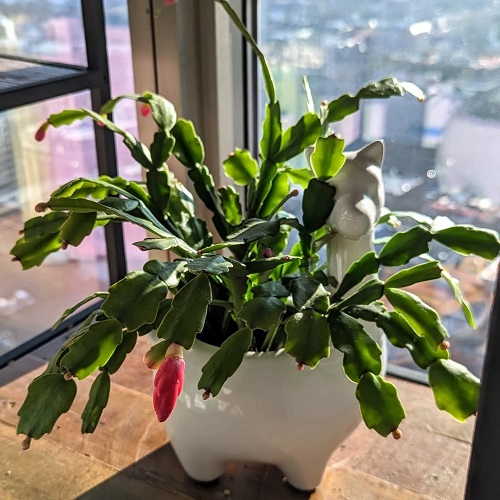
Of course, Christmas cacti are not genetically related to orchids, but they have quite similar growth habits. Just like orchids, these too prefer humid conditions and can develop aerial roots that are perfect for absorbing moisture and nutrients from the surroundings.
6. They Can Self-Pollinate (But Prefer a Pollinator!)
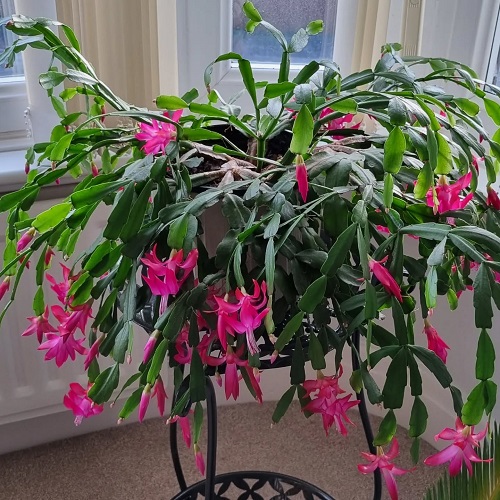
In a pinch, they can self-pollinate. But if you’re after stronger seeds and better blooms, you’ll want hummingbirds or insects around. Their tubular flowers are designed to attract pollinators with long beaks or tongues.
Back in Brazil, hummingbirds are their main pollinators.
7. Can Bloom At Any Time
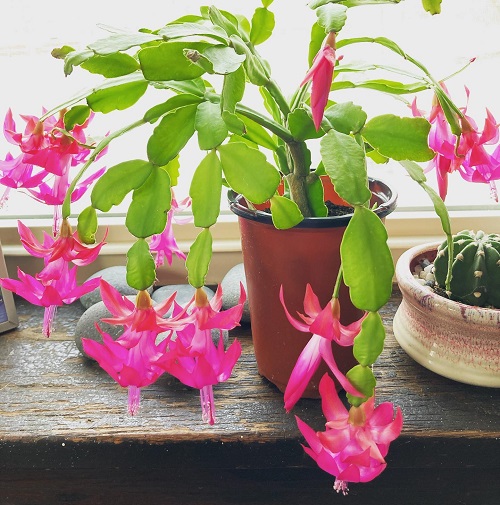
Although they usually bloom around Christmas, they can flower at other times too—if the conditions are right.
Now you should know that most Christmas cacti bloom during the winter months in the northern hemisphere, as they do in summer in their native habitat of Brazil. Here, they are known as Flor de Maio, which means “May flower”, to indicate the month when it blooms.
8. Tricks to Blooming
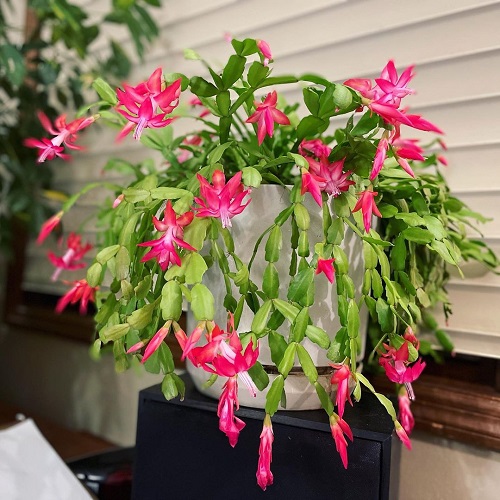
After the previous point, you may be wondering if it really is true that the Christmas cactus can bloom anytime. And the short answer is yes, you can actually trick this plant into blooming.
Just give them shorter days and longer nights (14–16 hours of darkness) for about 4 weeks. Keep the temps a little cooler, especially at night.
Do this, and you’ll have buds bursting just in time for the holidays!
9. Absorbs CO2 at Night
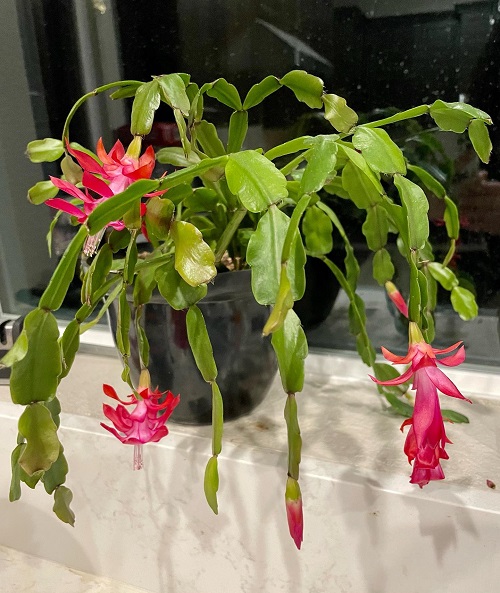
You might have heard of houseplants that take in CO₂ at night and release oxygen. Well, Christmas cacti do that too! Place one in your bedroom, and you’ll enjoy better air and a good night’s sleep!
10. Keeps Indoor Air Clean
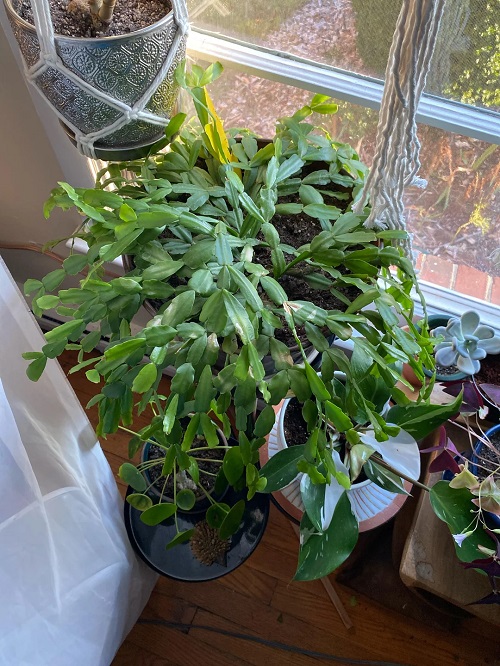
Adding to their resume—they clean the air too! Christmas cacti can absorb pollutants like benzene and formaldehyde through a process called phytoremediation, using Crassulacean Acid Metabolism (CAM).
Once inside, their metabolism breaks toxins down into harmless compounds.
11. Not All “Christmas Cacti” Are True Christmas Cacti
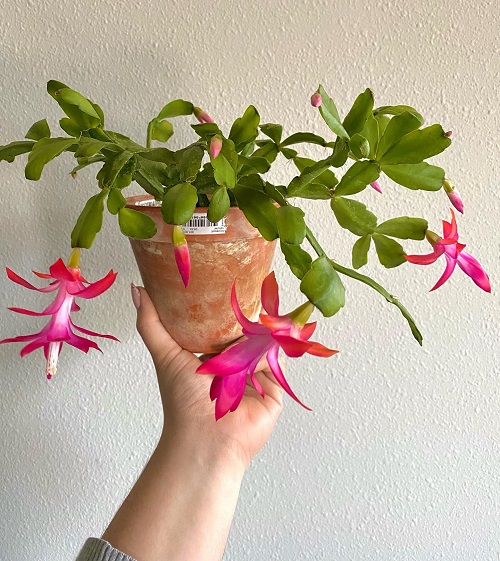
Not all cacti with scalloped leaves and flowers are true Christmas cacti! People often confuse the Thanksgiving cactus (Schlumbergera truncata) with the true Christmas cactus (Schlumbergera × buckleyi).
However, the November-blooming Thanksgiving cactus has pointed, claw-like teeth on its leaf segments, while the true Christmas cactus has rounded, scalloped edges.
12. Humidity Lover
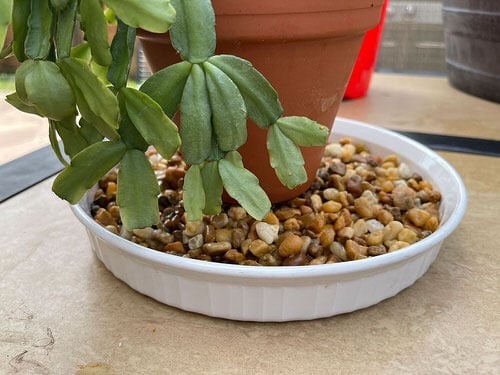
Despite the name, Christmas cacti aren’t like the typical desert cacti. They actually come from tropical rainforests and enjoy humid air—around 50–60% humidity is ideal.
If your home is dry, try placing a tray of water nearby or using a humidifier. Ever thought a cactus could crave rainforest vibes?
13. Wide Range of Colors
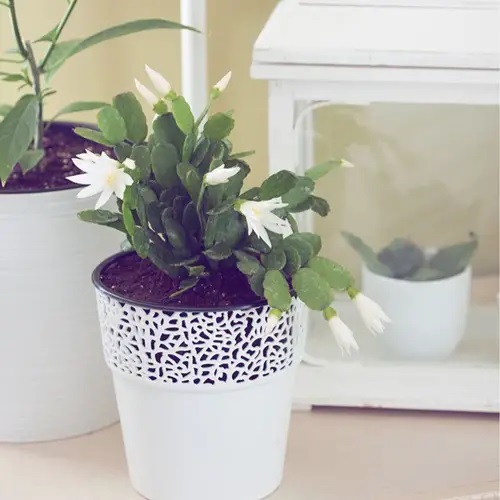
Think Christmas cacti only bloom in red or pink? Think again! There are beautiful shades like white, purple, orange, and even yellow (check out the ‘Golden Charm’ variety). Some blooms even have two colors, and we can guarantee these look pretty on any windowsill!
14. They Live For Decades

With the right care, your Christmas cactus might stick around for decades—some have lived over 145 years! Bright, indirect light, proper watering, and good drainage are the secrets to keeping them blooming year after year.
Who knows—you might just pass yours down to the grandkids!
15. Perfect Safe for Kids and Pets

Last but not least, are you worried about curious hands or paws? We say, no need! Christmas cacti are non-toxic, so they’re safe around children and pets. That makes them a great choice for a happy, worry-free holiday décor. A holiday plant with zero stress—what’s not to love?
So, which one of these facts surprised you the most? Let us know in the comments below!

